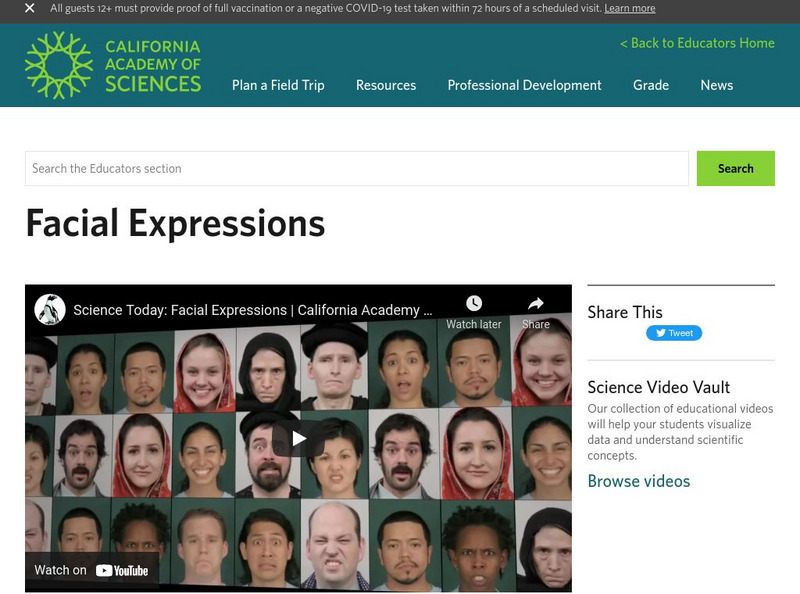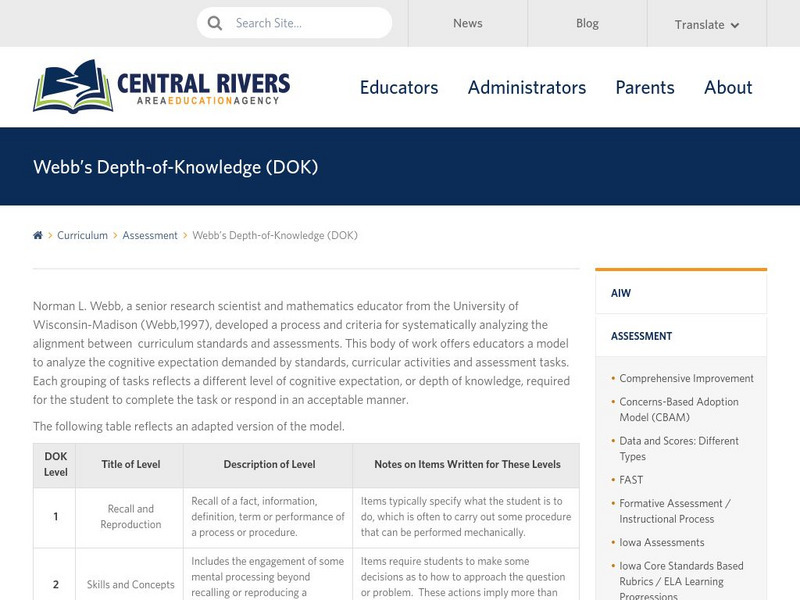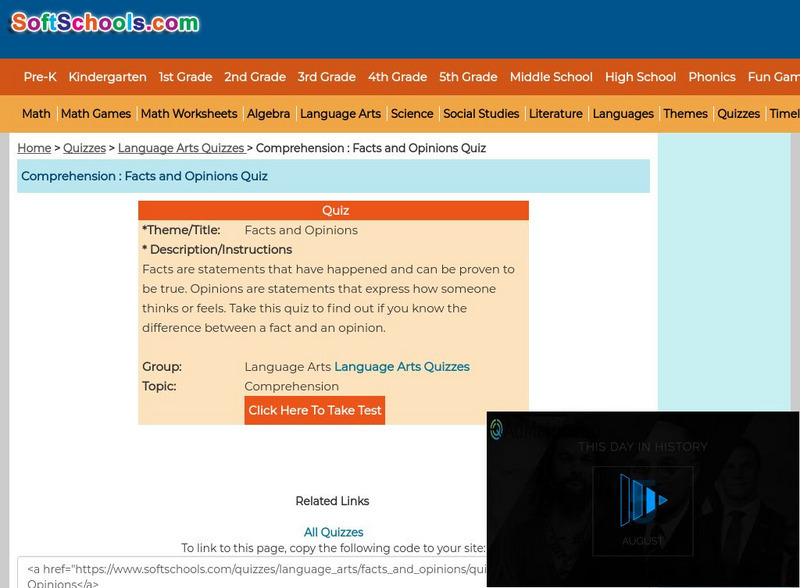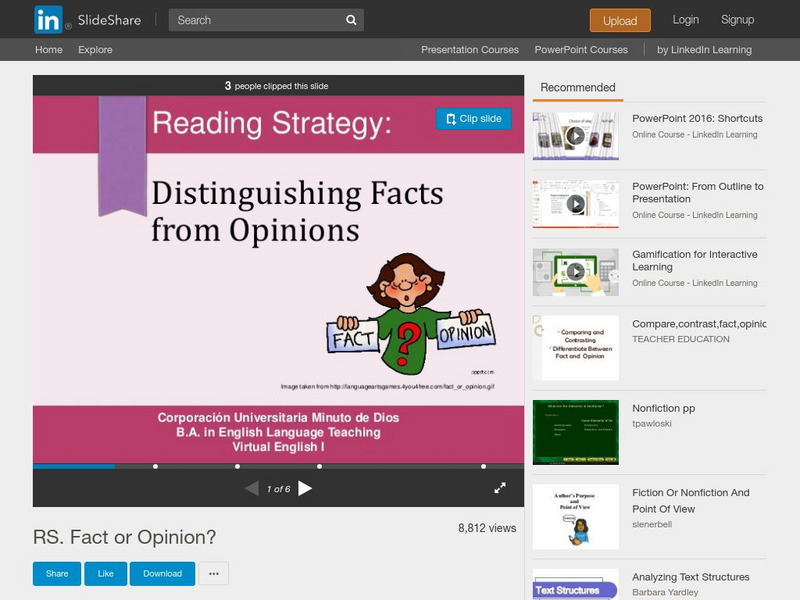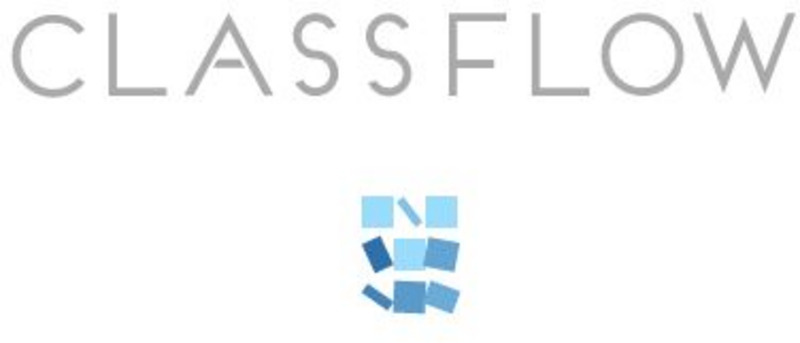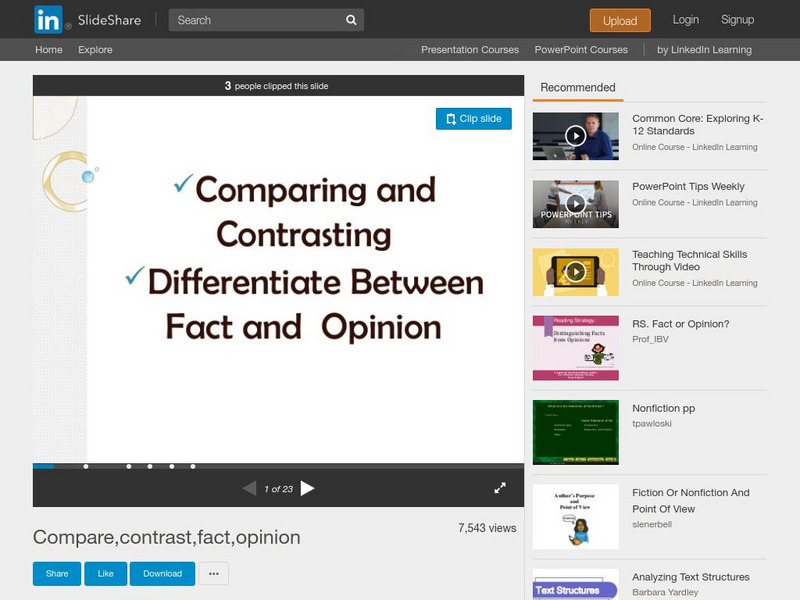Family Education
Family Education: Improving Your Child's Thinking Skills
By asking the right kinds of questions, you can help improve a students thinking skills. This site lists several ideas and types of questions that can help develop a child's critical thinking skills.
University of Pennsylvania
U Penn Library: Dreiser's Critical Reputation
A scholarly paper on Theodore Dreiser's "Sister Carrie" and the problem of using words to communicate as opposed to tone and other non-verbal means.
Quia
Quia: Reading Detective Drawing Conclusions 7
Read a short text and then choose the correct inference or conclusion in this four question quiz.
Quia
Quia: Making Inferences, Summaries, and Conclusions
Read a short text and then choose the correct inference, summary, or conclusion in this Rags to Riches style game.
Other
Cuesta College: Reading Comprehension Guide: Inferences and Conclusions
Explanations and examples of inferences and conclusions in reading and in understanding context clues to define unknown vocabulary.
Other
Wghill.com: Body Language and Non Verbal Communications
This site contains links about body language and non verbal communication skills. The links are about making good body language and non verbal communication skills such as eye contact and smiling.
Sophia Learning
Sophia: Cultural Communication Styles: Lesson 2
At the end of this tutorial, the learner will understand that communication symbols and styles vary in meaning and application between cultures. It is 2 of 3 in the series titled "Cultural Communication Styles."
TES Global
Blendspace: Nonverbal Communication
In this TES Blendspace, students will have access to nine resources that will help them learn about nonverbal communication.
California Academy of Sciences
California Academy of Sciences: Facial Expressions
Are facial expressions learned or innate? [2:58]
TES Global
Blendspace: Ethos, Logos, Pathos
A learning module with eight links to images, videos, charts, and assessments about ethos, logos, and pathos.
TES Global
Blendspace: Reasoning, Deduction, and Your Next Speech
A learning module that includes eight links to pictures, websites, and activities for using reasoning and deduction in a speech.
Other
Central Rivers Aea: Webb's Depth of Knowledge (Dok)
This page offers a wealth of downloadable resources for teaching critical thinking skills. Choose the thinking skill you wish to teach, and several .pdf files will be available, including strategies, assessments and student handouts.
Intel Corporation
Showing Evidence Tool: Analyzing and Evaluating Information
If you're looking for a way to engage students in analyzing and evaluating evidence, rather than simply piling up information, this tool may be a boon. Students can use it to construct an argument, rate the quality of resources, and...
Soft Schools
Soft Schools: Comprehension: Facts and Opinions Quiz
Determine whether each statement is fact or opinion in this ten-question quiz.
Tom Richey
Slide Share: Facts and Opinions
This slideshow focuses on facts and opinions; it provides definitions, examples, and articles for practice.
Other
Bradley C Vs: Interview Body Language: Techniques
The site outlines how to control your body during an interview.
ClassFlow
Class Flow: Fact and Opinion
[Free Registration/Login Required] Designed for grade 6, this flipchart covers the differences between fact and opinion. Students will analyze statements to determine if they are a fact or if they are an opinion.
ClassFlow
Class Flow: Fact or Opinion
[Free Registration/Login Required] This flipchart reviews the definitions of fact and opinion and gives the students opportunities to sort and identify fact and opinion statements.
Other
Six Minutes: Speech Analysis #3: Modified Sandwich Technique for Evaluations
A resource featuring a systematic approach to presenting a speech evaluation including various modifications. SL.9-10.3 Eval Presentation. CCSS.ELA-Literacy.CCRA.SL.3, SL.9-10.3 Eval Presentation
Houghton Mifflin Harcourt
Holt, Rinehart and Winston: Elements of Literature: Historical/biographical Analysis Chart [Pdf]
A short graphic organizer which allows students to assess the historical and biographical influence on a piece of literature.
Tom Richey
Slide Share: Comparing and Contrasting: Differentiating Between Fact and Opinion
This downloadable slideshow focuses on comparing and contrasting, and distinguishing between fact and opinion. It provides definitions and examples of each.
ClassFlow
Class Flow: What Is an Inference?
[Free Registration/Login Required] This flipchart defines what an inference is and helps students understand the concept using Activote to review and practice.
Other
Prezi: Explicit vs. Implicit
Slideshow explains the difference between explicit and implicit meaning in texts and visuals. Includes good examples and practice questions.










